
|

|
|
Home Site Search Contact Us Subscribe
|
|
|
2011 Rudy Bruner Award Winners Offer Innovative Models for Urban Placemaking This year's winners reflect a common understanding of the critical role that citizens, institutions, and governments play in the creation of successful civic places. By ArchNewsNow July 19, 2011 The Rudy Bruner Award, now in its 13th award cycle, has a longstanding commitment to promoting excellence in urban placemaking, and has honored more than 65 projects since its establishment in 1986. Acknowledging the dynamic interplay between process, place, and community values in realizing successful design, the award engages an in-depth, on-site evaluation process that strives to recognize outstanding interdisciplinary approaches to transforming urban challenges into community opportunities. These projects comprise a rich collection of well-documented case studies that serve as a growing resource for practitioners and community leaders alike.
Five projects from around the U.S. were recently honored with the 2011 Rudy Bruner Award for Urban Excellence. The prestigious biennial award recognizes exceptional civic places that harness collaborative design processes to improve the urban environment. At a time when conventional approaches to project development have been plagued by economic challenges, this year’s award winners exemplify flexible, resilient strategies for effecting lasting positive change within their communities. As the Gold Medal recipient, the Bridge Homeless Assistance Center in Dallas, Texas, will receive $50,000, while four Silver Medal recipients will receive $10,000 each.
While encompassing a wide range of disciplines and approaches, this year’s winners reflect a common understanding of the critical role that citizens, institutions, and governments play in the creation of successful civic places. Each project offers a powerful example of the positive influence that community-minded design and development can have in empowering local communities and addressing pressing social issues.
Award-winning role models
The Bridge Homeless Assistance Center illustrates the transformative role that architecture can have in driving an innovative approach to addressing urban homelessness. Located on the edge of Dallas’s central business district, the 75,000-square-foot campus engages a luminous façade and ample outdoor courtyards to provide an uplifting and welcoming environment for the Center’s 1,000 daily guests. Through partnerships between various service providers, The Bridge delivers a comprehensive continuum of care – including emergency shelter, meals, medical care, employment assistance, training, and on-site transitional housing – to support clients in achieving self-sufficiency in permanent housing. Designed by San Antonio-based Overland Partners and Dallas-based CamargoCopeland Architects, The Bridge was funded by a bond measure and led by a mayor-appointed committee that engaged neighbors, police, city council members, and homeless citizens in a series of collaborative design workshops. The project’s critical program and unique partnerships stand as an exceptional example for other communities.
Brooklyn Bridge Park, one of four Silver Medal recipients, exemplifies how a citizen-led planning and financing strategy can transform a post-industrial waterfront area into a powerful, public, open-space asset. Occupying a 1.3-mile stretch of riverfront, the 85-acre park was initiated when the community, in an effort to prevent commercial development on the site, created a local development corporation to lead a public planning process for a new waterfront park. The multi-faceted landscape design, by Michael Van Valkenburgh Associates, weaves sustainable elements and dynamic forms into a complex series of free recreational programs that include aquatic recreation, habitat restoration, community events, and environmental education.
Also receiving a Silver Medal, Civic Space Park in downtown Phoenix, Arizona, demonstrates how a local government and major institutions can successfully partner to create an exceptional urban asset for a whole community. Building upon the success of Arizona State University’s downtown campus as a revitalizing force, the City of Phoenix and ASU entered into an unprecedented town-gown partnership to develop a new 2.8-acre public park, transforming a blighted area into a sustainable, mixed-use amenity that serves diverse community needs. Forming a crossroads between four distinct institutions – Arizona State University, the YMCA, a low-income senior housing development, and the Central Transit Station – the park connects important public and university facilities to draw students, seniors, employees, commuters, and visitors to Phoenix’s downtown core. Designed by Phoenix office of AECOM, with substantial input from voters, businesses, and civic groups, Civic Space Park was applauded by the selection committee for the high level of community engagement that brought it to fruition.
Gary Comer Youth Center and Gary Comer College Prep create a landmark educational campus in Chicago’s Grand Crossing neighborhood, providing a safe and stimulating learning environment for South Side youth both during and after school. In a unique symbiosis that activates a full-time educational environment, the multi-purpose youth center accommodates activities for the high school’s 600 students during the day, and sponsors education and fitness programs for the entire community during evenings, weekends, and summers. Funded by the Comer Science and Education Foundation, the youth center and school are part of Chicago’s Planned Development process and involved substantial input from city agencies and the local community. The selection committee highlighted the resourcefulness and optimism of the project’s design, by Chicago-based John Ronan Architects, which allows the Youth Center to serve both academic and community functions.
The Santa Fe Railyard Redevelopment, a testament to the power of civic involvement in the realization of great urban spaces, emerged from a 20-year community effort to shape the form and content of the city’s last major redevelopment area. When Santa Fe’s 40-acre rail yard was threatened by private development in the early 1990s, the city mobilized to purchase and protect the historic site for a local vision. With involvement from more than 6,000 community members, a master plan was developed and implemented over the next decade through a partnership between a non-profit community corporation and the Trust for Public Land. The result is a vibrant, multi-use park and public plaza that includes commercial and cultural facilities, and a commuter rail connection for Northern New Mexico within the rail yard’s historic depot. The project team included New York City-based Ken Smith Landscape Architect and Frederic Schwartz Architects, Santa Fe-based Surroundings Studio LLC, and public art consultant Mary Miss. The selection committee was impressed by the integration of new development with the preservation of the Railyard’s existing structures and industrial character, and lauded the project’s extensive community engagement.
Case studies of the 2011 Rudy Bruner Award Winners will be published this fall. These, as well as past publications are available online at www.brunerfoundation.org/rba/.
|
(click on pictures to enlarge) 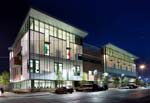 Charles David Smith The Bridge 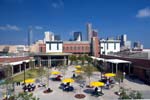 Charles David Smith The Bridge 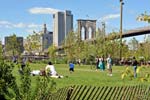 Julienne Schaer Brooklyn Bridge Park  Bruner Foundation Brooklyn Bridge Park 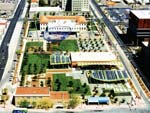 City of Phoenix Civic Space Park  Bruner Foundation Civic Space Park 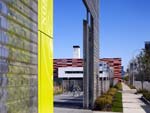 Steven Hall/Hedrich Blessing Gary Comer Youth Center and Gary Comer College Prep 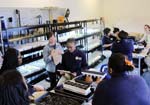 Bruner Foundation Gary Comer Youth Center and Gary Comer College Prep 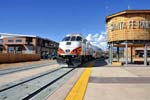 Santa Fe Railyard Community Corporation Santa Fe Railyard  Bruner Foundation Santa Fe Railyard |
© 2011 ArchNewsNow.com